My latest conservation project has been one involving chemicals and special equipment, doing something that we conservators face far too often—tape removal. But fortunately, our lab is well equipped with tools and materials specifically for that purpose.
In September there will be a new exhibit at the Nasher Museum of Art on empire and cartography, organized by the BorderWork(s) Lab here at Duke. Seventeen maps and books from the Rubenstein Library were selected for the exhibit, but many of them required treatment first. Rachel Penniman, Erin Hammeke, and I have been working to make sure the items will be in safe condition before they make the short journey across campus to the museum.
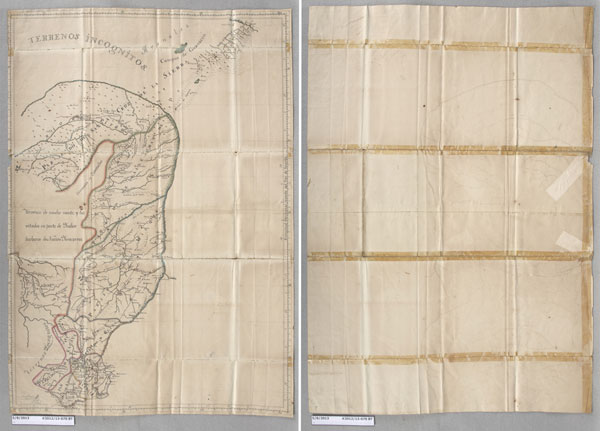
One item that has required the most work for me is an early 19th century hand-colored manuscript map from South America labeled “Terrenos Incognito” (above, front and back). Although on good quality, strong paper, the map was previously folded so many times that it began to break along the folds, and so some well-intentioned person in the past reinforced the folds with strips of tape on the back. Over time, the adhesive turned yellow and seeped through the paper, leaving stains along all of those fold lines. And not only is the staining unsightly, but the adhesive is also chemically destructive to the paper, making it brittle and more liable to break. So now, as is often the case, I am spending many hours undoing someone’s quick fix that turned out to do more harm than good.
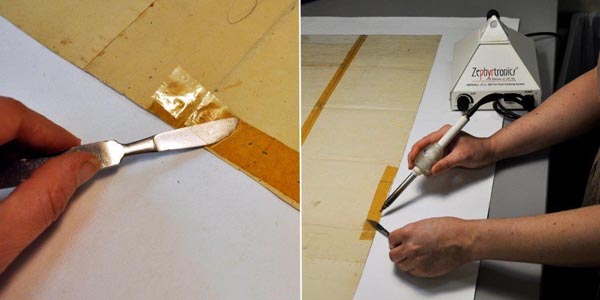
Before using any chemicals I tried mechanical means to remove the tape. First I had to remove the carrier, the plastic part of the tape that the adhesive is attached to. For that I used a hot air tool to soften the adhesive and an unsharpened dissection scalpel (my favorite tool) to lift the carrier off. But there was a lot of residual adhesive left on (and in) the paper.
After testing the adhesive’s solubility in various chemicals, I selected the most appropriate solvent. In conjunction with the use of chemicals I have been using our excellent vacuum pump and manuscript suction device, also officially known as a Stealth Sucker. I work in the fume hood to avoid breathing solvent fumes. I lay my map on the suction platen and use solvent to dissolve the adhesive, then the vacuum action draws it out of the paper. I can only treat an inch at a time and the work is very slow, but the effect is rewarding . Although there will always be some staining visible, the map’s appearance is beginning to improve dramatically. Soon I hope to have it finished, and visitors at the Nasher will be able to appreciate its beauty without the distraction of adhesive stains.

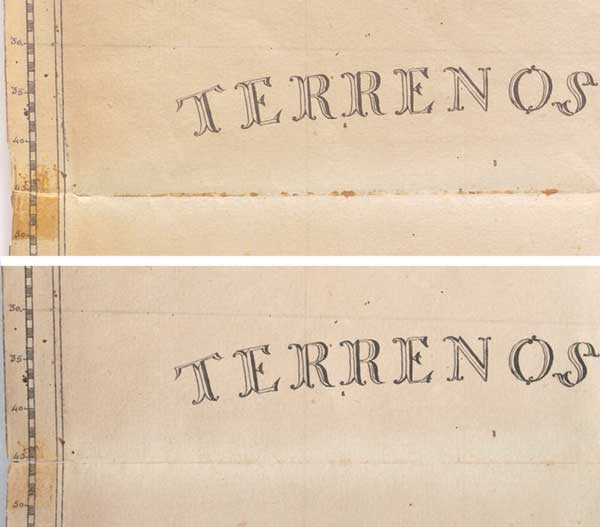
Post contributed by Grace White, Conservator for Special Collections, as part of our ongoing “In the Conservation Lab” series.


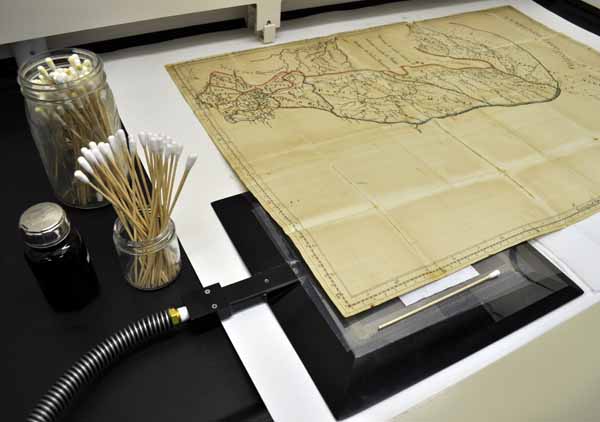

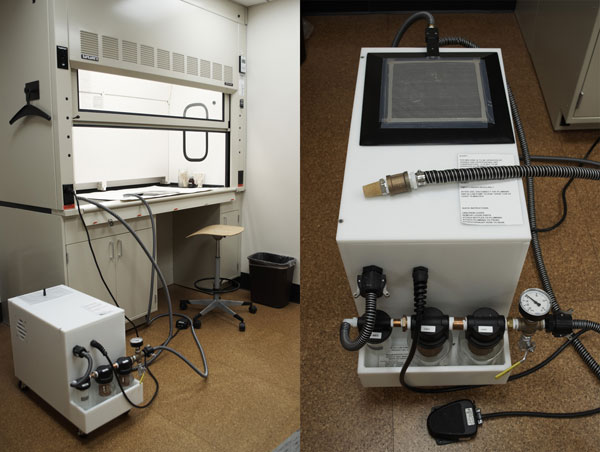
Thank you for the behind the scenes view. Once the adhesive is removed, will you do anything to reinforce the fold lines?
David, where there are actual tears I have been mending on the back with thin strips of Japanese paper and wheat starch paste. Where there is no tear (like in the two closeups pictured), I don’t add any reinforcement because it’s not necessary. The paper is strong enough on its own. Someone was just over-zealous with their tape!
It’s a very interesting article! I have a question: wich solvents did you use to remove yellowed glues?
thank you very much!!
Thanks Lucia! I found through testing that toluene followed by acetone worked best while using the Stealth Sucker.
Thanx for the interesting article.
I have an old, big world map from 1900 which has loose paper pieces.
Do you know how I can fix these loose pieces (to attach it at the canvas back again)? And what kind of materials and tools do I have to use? thanx in advance!
Hi RN,
Thanks for reading! That might be something that requires a professional’s attention. Our Conservation Department has posted a handy list of resources at http://library.duke.edu/about/depts/conservation/faq. Let us know if they’re helpful!